Women Construction Workers Struggle To Access Maternity Schemes
Migrant female construction workers in Ahmedabad face immense challenges accessing maternity benefits and healthcare due to lack of documentation, poor living conditions, and exploitation by contractors
- Swagata Yadavar

Thaltej, a sleepy urban village in Ahmedabad, is being rapidly transformed into an upmarket neighbourhood. Between shopping complexes, upcoming restaurants and luxury spas is a community of workers whose lives are in sharp contrast to the city they are building.
Within the compound of the 30-floor building project is a settlement of construction workers who have been employed at the site for the last eight months. They live in small, cramped tin huts without any facilities for water or access to toilets. Many of the children of the workers are malnourished even though Aajeevika Bureau, a non-profit working on issues of informal workers, runs a creche at the facility.
At the creche, Behanbox met Simu Rakesh Garwa, 24, a migrant worker from Jhabua in Madhya Pradesh. She sends her two-year-old daughter to the creche while she is at work, from 9 am to 6 pm. In her one-hour lunch break, she visits the creche to feed her daughter.
Simu started working at the construction site with her husband, as soon as she was married at age 16. “The creche facilities are good, our kids are well-looked after here,” she said. The onsite facility also allowed her to exclusively breastfeed her daughter for six months. But that had not been the case with Simu’s older daughter, now 6, who she had delivered in her village in Jhabua. She had to return to work in Ahmedabad within two months of delivery so she had to leave the infant with her in-laws. In both her pregnancies, Simu had worked at construction sites till the 7th month of her pregnancy and returned home in Madhya Pradesh to give birth.
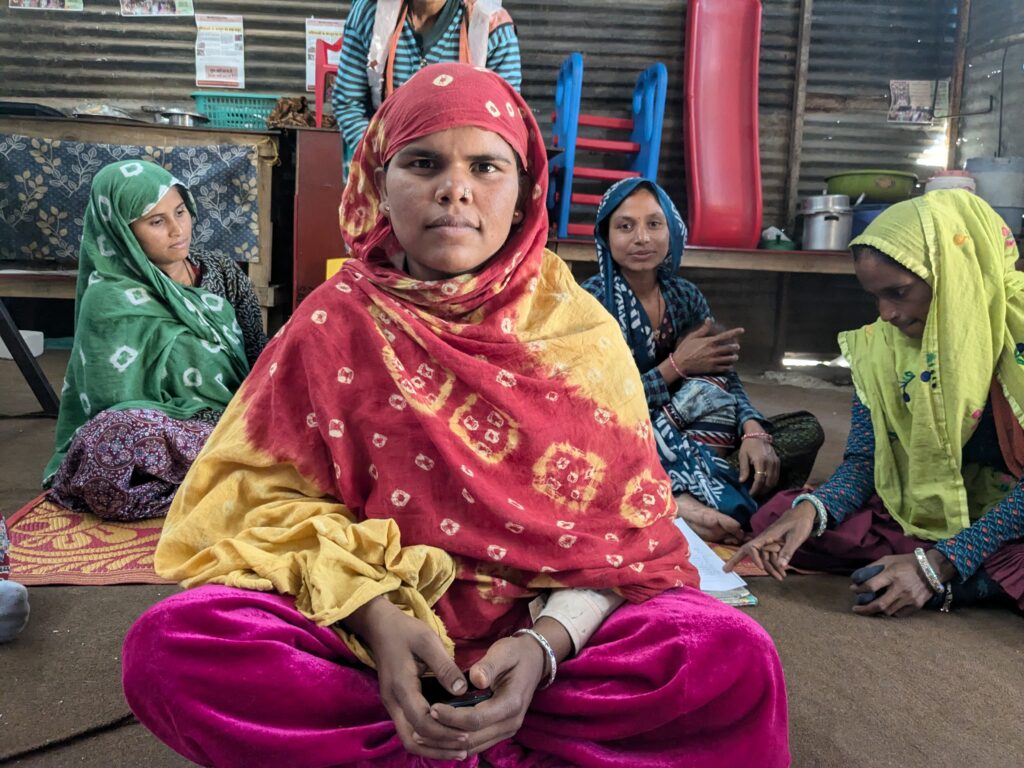
Simu’s story is similar to most of the other female construction workers working here. They migrate from the states neighbouring Gujarat for a few months a year, working and staying at construction sites. The work is back-breaking–lifting stones or bamboo, filling cement into baskets and cleaning. They usually work in tandem with their husbands–while their husbands do the cementing work, they fetch the cement bags and sieve sand. Every day after 8-9 hours of physical work, women have to do the rest of the household chores like fetching water, cooking, cleaning and taking care of the children.
Five years ago when the Covid pandemic hit and a nationwide lockdown was imposed, migrant workers had been among those hardest hit. Stakeholders in the construction sector vowed to take care of workers and the government had announced a slew of schemes to help them too. However, experts and migrant workers from the sector report little progress and say that women continue to bear the unequal burden of this owing to poor access to maternity health related services.
“Covid provided a window of opportunity to engage and negotiate with employers; some employers have brought in changes [health checkups for workers, community kitchens, providing better living conditions], but in many places things have remained unchanged,” said Divya Ravindranath, senior consultant in the School of Human Development at the Indian Institute for Human Settlements (IIHS) who has researched on maternal and child care among migrant workers.
In this article, we speak to female migrant construction workers in Ahmedabad, a rapidly developing city with approximately 1.5 million migrant workers, to understand the challenges they face accessing government benefits and the possible solutions.
Slew Of Schemes, But Out Of Reach
At the Ahmedabad site, women workers earn Rs. 380 per day and men around Rs. 500-600. Women hardly have any financial agency as contractors deal only with their husbands, including the handing over of women’s salaries. Most workers also face financial exploitation because of the kharchi system – under it, contractors give workers advance sums for their basic expenses forcing them to repay through work the entire season.
Construction is one of the fast-growing industries in India, employing more than 50 million workers–10 million of them women. The industry is heavily dependent on seasonal migrants who account for 40% of its labour. Most come from less developed regions of the country where agriculture is the predominant occupation but generates scant or only seasonal work. Construction work provides economic stability and security, allowing workers to supplement their income, repay debts and build assets.
However migrant workers in construction face precarious working conditions and exploitation due to the informal nature of the job and the difficulty in accessing legal and employment benefits. This is especially true for female migrant workers in construction who face additional challenges during pregnancy, childbirth and postpartum. While the Covid pandemic impacted the industry negatively leading to labour scarcity, supply chain disruption, decreased construction productivity; it was hoped it would lead to better labour health and safety measures for construction workers.
There are many state and central government policies that are designed to improve maternal and child health. For example, there is Pradhan Mantri Matru Vandana Yojana (PMMVY), implemented since 2017 that gives the mother Rs 5000 in two installments for the first child and Rs. 6000 for the second, if it is a girl. There is also the Building and other Construction Workers (Regulation of Employment and Conditions of Service) Act 1996, that mandates conditions for safety, health and welfare measures of construction workers like a fixed day of rest after 7 days of work, maternity benefit, accommodation, creches for sites with more than 50 female employees etc.
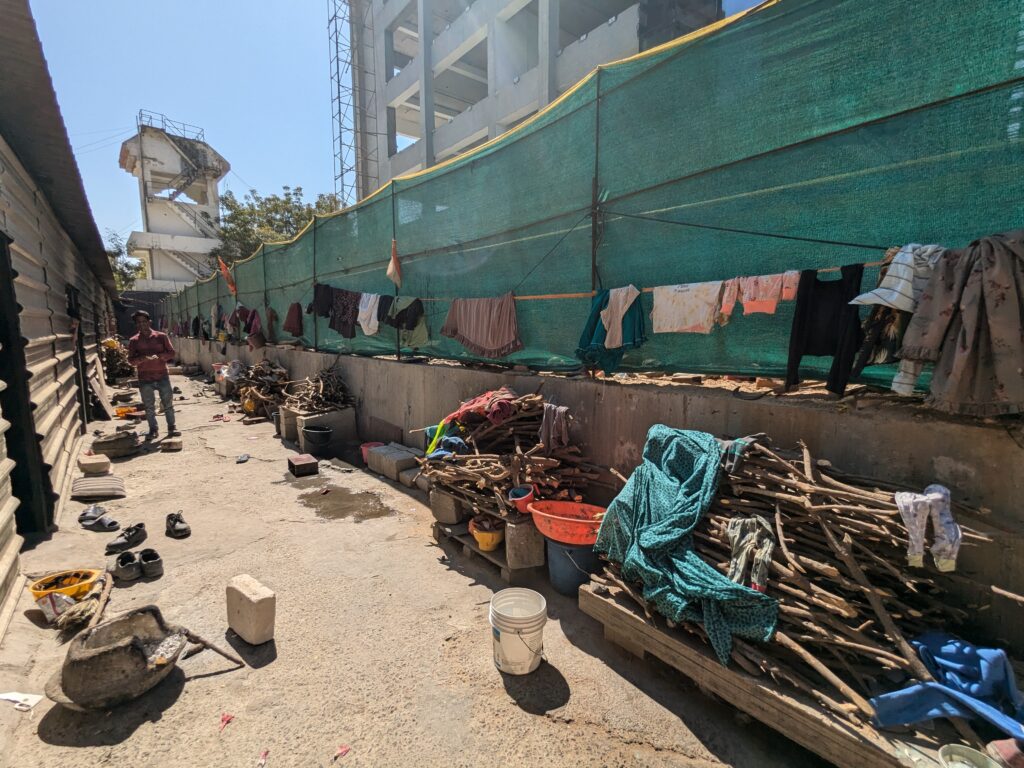
Then there is the Maternity Assistance Scheme – implemented by the Gujarat Building and Other Construction Workers Welfare Board of the state’s Labour, Skill Development & Employment Department – which provides Rs 37,500 is provided to a registered female construction worker and Rs. 6000 to the wife of a registered construction worker for her first two deliveries.
But availing the benefits of these schemes is challenging. For instance, the Maternity Assistance Scheme requires the beneficiary to be registered with it and also requires them to apply within six months of pregnancy. The reality is that in most cases construction workers keep going back and forth between their native villages and the construction site to handle agricultural work or social and familial obligations. They often do not carry all the required documents with them when they migrate for work. This is why getting all the papers ready to avail the schemes is difficult, said Dipti Makwana, social worker, Aajeevika Bureau.
Precarious, Unsettled Existence
Sarmaben Bhuria, a construction worker and activist, runs an Anganwadi in her neighbourhood of informal settlements near Asarwa close to the railway yard in Ahmedabad. She helps other workers get their vaccinations and antenatal check-ups but has been unable to secure for her own daughter-in-law the benefits of the Maternity Assistance Scheme.
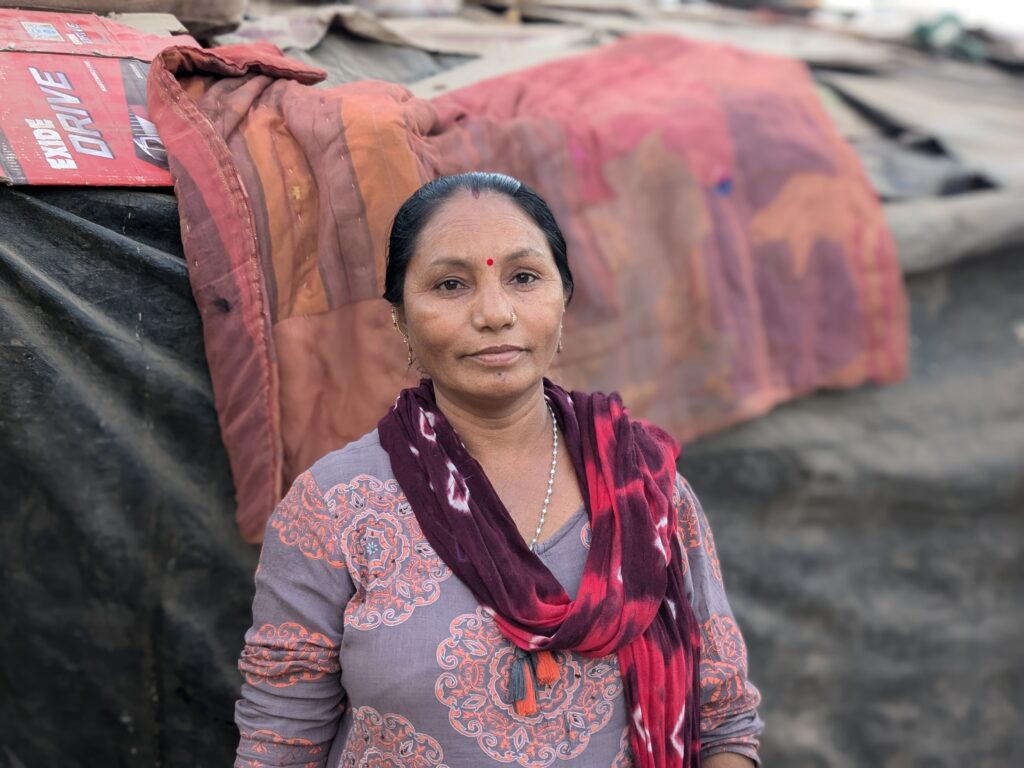
“She was able to get the amount [Rs. 17,500] for the first birth but not the second. I have made multiple visits to the labour department but no one can tell me why it is stuck,” she said. This is true for many other construction workers from her area who have gone home to Dahod, a district 200 km away, to get the papers done, spending money and time. They are yet to receive the benefits, she said.
We reached out to the Deputy Chief Labour Commissioner, Ahmedabad, regarding the complaints by activists and workers. We will update the article when we receive a response from them.
Most of the workers in her neighbourhood belong to the Adivasi community from Dahod and have been working in construction for decades. “I remember my parents settled here when the wagons used to carry coal into Ahmedabad,” she said. Despite working hard, her family has not been able to move out of precarious existence and continue to stay in kutcha houses on open ground without access to water, toilets or electricity. Even though workers in labour nakas earn more than those on construction sites, they are employed less often. “We go to the nakas everyday but find work only 15 days in a month and most of what we make goes in meeting our living expenses,” she said.
A 2024 paper on maternal care issues among migrant construction workers’ children in Ahmedabad found that the majority belong to historically marginalised scheduled tribe groups (76%); nearly half were underweight and had low BMI. Most of the women worked late into their pregnancies and returned to work within weeks of childbirth to avoid wage loss. None of them got the mandated four antenatal check ups and only most of them got checked up only once in their entire pregnancy due to time constraints, lack of leave, and irregular wage patterns.
“Women perceived urban healthcare systems as unfamiliar, unaffordable, and challenging to reach or navigate. Pregnant women preferred to go back to their villages for childbirth and postpartum care as there was likely to be greater familial support, which was absent in the city,” the paper noted.
Visiting Health Centre Means Wage Loss
While central schemes for antenatal checkups, vaccinations and nutrition like Pradhan Mantri Surakshit Matritva Abhiyan can be availed in health centres in all states, migrant workers are unaware about how to avail it in the cities they work in. While Aajeevika Bureau and other non-profits help workers register for the schemes, migrant workers find it difficult, as we said earlier, to find the time to visit the health centre.
“Even ICDS workers are reluctant to register migrant workers because they often migrate back to their villages and [their poor health parameters] affects their data,” said Saloni Mundra, executive, Program and Knowledge Support, at the Aajeevika Bureau. Even to avail the benefits of the Maternity Assistance Scheme, the husband’s name has to be on all the documents such as the ration card, Aadhaar card, etc. But this is rarely done given the early age at which marriages are conducted in many parts of rural India. The workers then have to make multiple visits back to their villages to get the documents updated, she said.
Given the marginalised and poorer communities that they come from, female migrant workers are less educated and often are married before 18. Given their age status, they are reluctant to visit the urban health clinics and are not even aware when they are pregnant. Many of the female construction workers we interviewed did not know their age or the age at which they were married.
At the Aajeevika Bureau’s creche, Sumitra ben, who looked not more than 17 but already had two daughters and was pregnant with the third one, came for a brief chat. Her oldest daughter is just four and she delivered her in the village and stays there with her in-laws. She says she will have more kids till one of them is a boy. “Birth control is not exercised in the communities and the families often have 3-5 children. We need to spend a lot of time counseling the husbands so that they agree to get their wives’ tubes tied,” said Dipti Makwana. “Hospital staff are not happy if the women below the age of 24 want to get the tubal ligation procedure done, they say it is too early and send them back.” There is similar resistance to getting access to abortions in public facilities and most female workers prefer buying abortion pills and doing it themselves which contains its risks.
Some Shifts In Employer Approach
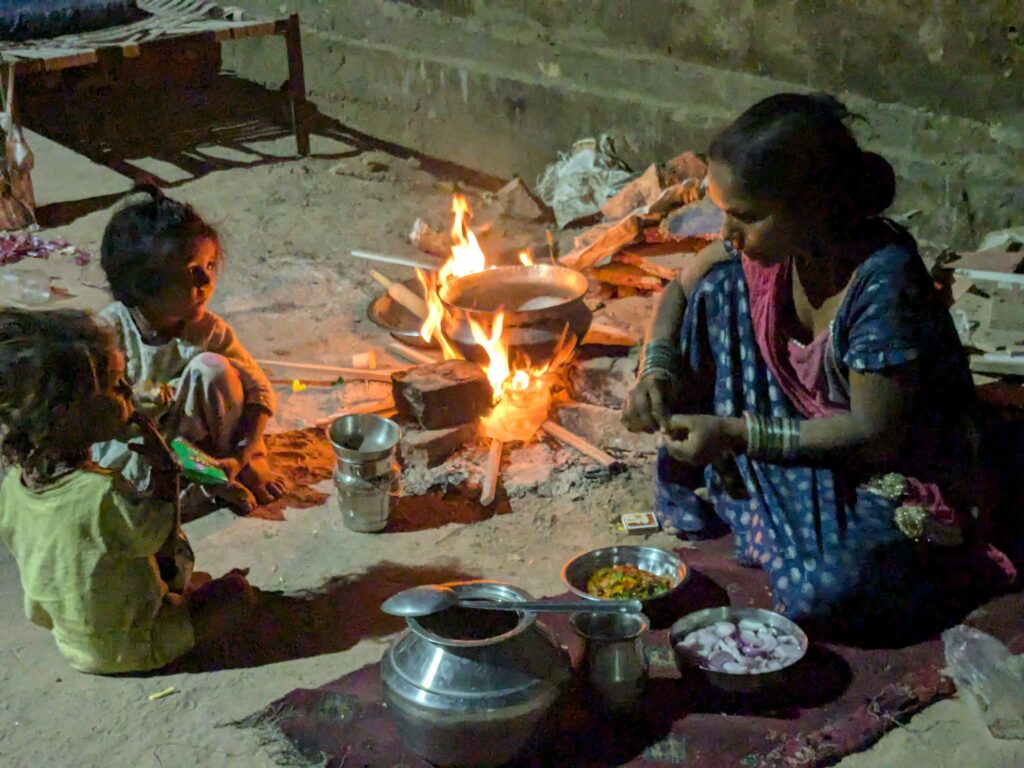
There are children of all ages in the worker’s settlements at all times and most are left at home with their elder siblings. However the unhygienic conditions and unsafe environments puts them at risk. With frequent migration, their education is disrupted and their nutrition poor and vaccination incomplete.
A 2018 study of the nutritional profile of construction workers’ children in Ahmedabad showed that nearly half of them were underweight, 40% of them were stunted and 22% were wasted. The study further found that lack of information as well factors like inability to take breaks or lack of space impacted infant feeding practices.
Nonprofits said that employers are now waking up to the advantages of having creches at work sites. “There is less chance of accidents which is an additional liability for them if a child falls or gets injured or dies. There is also a belief that if the mother is not constantly caring for the child, her productivity improves,” said Divya Ravindranath, one of the authors of the 2018 study quoted above. But builders are not keen to set up creches themselves, preferring that an NGO do it for them, she added.
Though urban health centres organise medical camps, vaccinations and doctor days, they remain out of access for construction workers as their work sites are often in far-off areas and construction workers work till 6 pm typically by which time the health institutes close.. “Most construction workers prefer going to the private health centres for their medical ailments because of multiple issues– language barrier, requirement of documentation and also the ill-treatment they are subjected to in government set-ups,” said Saloni Mundra.
A Gujarat government initiative, “Dhanvantri Raths” are medical vans that offer free medical check-ups and primary care treatment. These move between construction sites, nakas and labour colonies. However they also operate during work hours. “Builders and contractors are not very happy about the vans coming during their work hours and workers do not get the opportunity to avail their services,” Mundra said.
Cut Paperwork, Raise Awareness, Incentivise Contractors
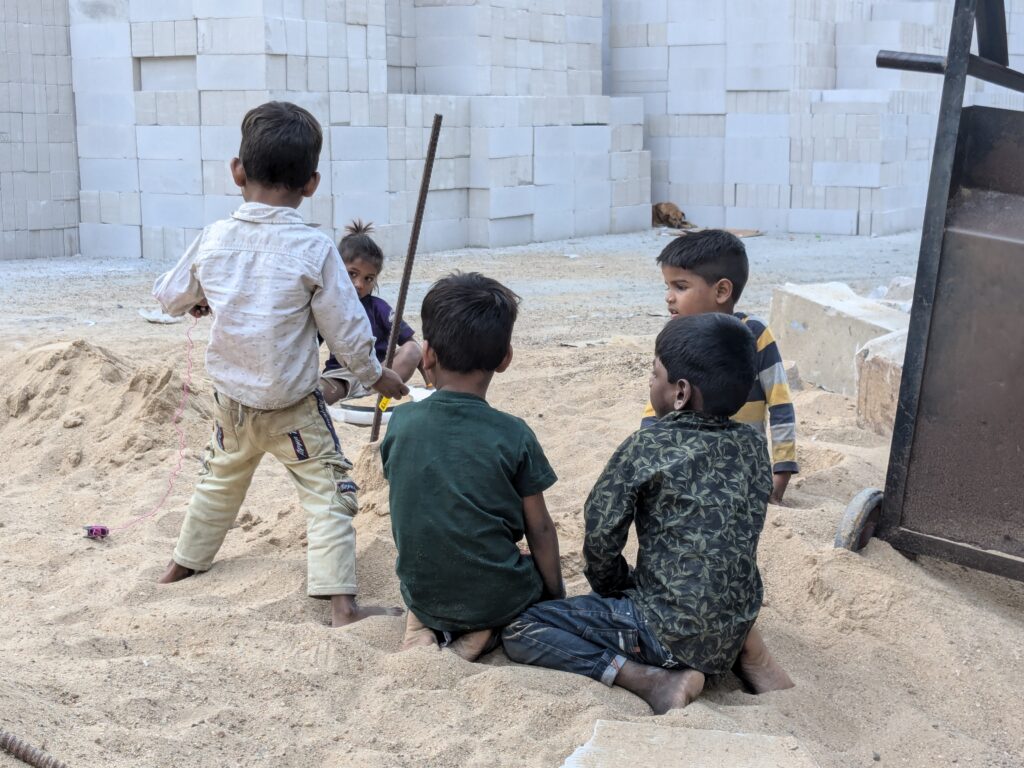
It is 6 pm and women construction workers are lining up with their children at the medical camp at Asarwa for a medical exam. The setting is sparse—there is a cot where the doctor and her assistant sit and a table where the generic medicines are stored in plastic containers. Dipal Shah, a physician, talks to each patient, examines them and gives them medicines they need. “This medical camp is actually to get the community to visit us so that we can spread awareness about hygiene, vaccination, family planning and also the harms of tobacco addiction,” she said. Shah is a consultant with Aajeevika Bureau though she works full-time in the public health system. Her role here is to connect the workers with the right people in the system to help them secure vaccinations, Aadhaar cards, medical checks or help with delivery.
Most workers prefer taking their children home for any illness and even vaccination. But now thanks to Mamta cards that have unique IDs that can be availed at any Anganwadi, mothers are getting vaccinated at urban health centres too. “There are many schemes in the government but most of the workers are not aware of them, it is our effort to connect them to the government system so that they can get benefits,” said Shah.
While non-profits can play a part, there is a need for mass mobilisation and targeted campaigning, said Divya Ravindranath from IIHS. Builders can be roped into getting workers registered but often are not keen or willing stakeholders in the process, “We found out there are layers of contractors and subcontractors between principal employers and workers so immediate subcontractors can be made responsible, ” she said. “They can be incentivised to register workers so that they can avail the benefits designed for them.”
We believe everyone deserves equal access to accurate news. Support from our readers enables us to keep our journalism open and free for everyone, all over the world.

